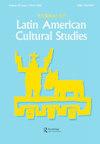Sites of Situated Hope: Amazonian Rhythms, Unruly Caribbean Plants, and Post-Anthropocentric Gazes in Contemporary Latin American Cinema
IF 0.3
4区 社会学
Q4 CULTURAL STUDIES
引用次数: 1
Abstract
This article examines the ways in which the cinematic practices of the audiovisual productions Farmacopea (2013) by Beatriz Santiago Muñoz (Puerto Rico) and Río Verde (2017) by Diego and Álvaro Sarmiento (Peru) address human-nature assemblages by articulating a post-anthropocentric gaze. Addressing these two movies as neoregional films, this essay discusses how these contemporary audiovisual productions explore the disastrous environmental histories of the tropical plantation in the Caribbean and the extractive exploitation of the Peruvian-Amazon jungle, exhibiting cinematic techniques that disrupt the socially committed tradition of Latin American cinema of the 1960s centred on human communities. Deploying experimental and poetic cinematic techniques, it is argued that these movies feature small matter by foregrounding local poisonous vegetation and corporal takes of humans and animals that register landscapes in disappearance in the face of modern extractive practices. Departing from Santiago Muñoz’s and the Sarmiento brothers’ filmic productions, we discuss how the embedding of Amazonian rhythms and unruly Caribbean plants in their filmic narratives produces sites of situated hope that both reconceptualise Latin American cinema and contest the necro-political violence of the modern extractive machinery.希望之地:当代拉丁美洲电影中的亚马逊节奏、不规则的加勒比植物和后人类中心的凝视
本文探讨了Beatriz Santiago Muñoz(波多黎各)的视听作品《Farmacopea》(2013年)和Diego和Álvaro Sarmiento(秘鲁)的视听作品《Río Verde》(2017年)的电影实践方式,通过阐述后人类中心主义的视角来解决人与自然的组合问题。本文将这两部电影视为新区域电影,讨论了这些当代视听作品如何探索加勒比热带种植园的灾难性环境历史和秘鲁-亚马逊丛林的采掘性开发,展示了电影技术,破坏了20世纪60年代以人类社区为中心的拉丁美洲电影的社会承诺传统。采用实验性和诗意的电影技术,这些电影通过突出当地有毒的植被和人类和动物的身体来表现小事,这些都记录了面对现代采伐行为而消失的景观。从圣地亚哥Muñoz和萨米恩托兄弟的电影作品出发,我们讨论了亚马逊节奏和不受控制的加勒比植物如何在他们的电影叙事中嵌入,从而产生了定位希望的场所,既重新定义了拉丁美洲电影,又挑战了现代采掘机的死亡政治暴力。
本文章由计算机程序翻译,如有差异,请以英文原文为准。
求助全文
约1分钟内获得全文
求助全文

 求助内容:
求助内容: 应助结果提醒方式:
应助结果提醒方式:


